By Walter Sabo
Consultant, Sabo Media Implementers
A.K.A. Walter Sterling
Radio Host, “Sterling On Sunday”
Talk Media Network
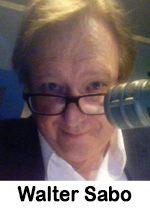 It seems every hour Nielsen and Pierre Bouvard of Cumulus fame (formerly of Westwood One) put out a release stating that radio is just fine, thank you. Radio is more persuasive than TV, direct mail, streaming and print. Radio is a proven success for over 100 years. Most of the buildings housing Procter & Gamble were built on radio – not TV – advertising success. Happily, P&G realized radio’s clout and is now a dominant radio advertiser – again!
It seems every hour Nielsen and Pierre Bouvard of Cumulus fame (formerly of Westwood One) put out a release stating that radio is just fine, thank you. Radio is more persuasive than TV, direct mail, streaming and print. Radio is a proven success for over 100 years. Most of the buildings housing Procter & Gamble were built on radio – not TV – advertising success. Happily, P&G realized radio’s clout and is now a dominant radio advertiser – again!
Audience data, facts, do little, if any, good. Based on the facts, radio should be the number one local advertising medium. It’s not, direct mail wins. Value Pack.
Every year radio’s revenue goes down. Many stations deliver consistent ratings and consistent product – yet they are going down in billing. Selling hard numbers, provable numbers, is not growing the industry.
Why do you buy stuff? Quantitative numbers are not driving revenue. What’s an option? Why do you buy… anything? If you’re buying an essential item like milk, the purchase is price driven. But radio is not an essential ad buy, yet the sales challenge is met by lowering spot rates. That hasn’t solved anything. Lower spot rates make overall revenue worse by lowering perceived value.
Your non-essential purchases are determined by price and emotion. Do you need that? No, but you want it. What does radio provide to a listener? EMOTION. Music and talk radio elicit emotional responses. Profound, deep, emotional responses. Why do clients cancel talk radio? Because they are offended, embarrassed or angry. Why do clients cancel a music station? Because they hate, can’t stand or are offended by the songs. Media buyer emotions drive capricious, rapid ad campaign cancellations. (Why do you get fired even though your numbers are just fine? Because you offended somebody.)
If numbers don’t maintain a buy, what would compel a buy?
Tangibles plus on-air emotion. Tell you a secret. Most TV media buys are for shows, not audience. Right. Math-driven media buying services buy TV shows they like.
Suggest we look to move off the spreadsheet, the programmatic, and enter the warmth of emotional selling, selling to a buyer’s personal likes. (Jingle Ball – genius!) Personal likes. The numbers aren’t serving the need for revenue growth. Soft drivers: Concert tickets, prize winners, food, free tracks, buyer names on air, parties, gift for kids. Old school? No. Proven school. New school isn’t working. Turn radio’s air into tangible, shiny objects. Radio elicits emotional responses, let’s sell to them. That’s powerful! More powerful than time spent listening.
Walter Sabo has been a C Suite action partner for companies such as SiriusXM, Hearst, Press Broadcasting, Gannett, RKO General and many other leading media outlets. His company HITVIEWS, in 2007, was the first to identify and monetize video influencers. HITVIEWS clients included Pepsi, FOX TV, Timberland, Microsoft, and CBS Television. He can be reached at walter@sabomedia.com and www.waltersterlingshow.com. “Sterling On Sunday,” from Talk Media Network airs 10:00 pm-1:00 ET, now in its 10th year of success.
Share this with your network
 Commerce vowed to sue the FTC to block the proposal, calling it ‘an unlawful power grab’ in a statement shortly after the vote. The chamber, as well as the two dissenting [FTC] commissioners, has argued that the FTC doesn’t have the authority to address this issue and that it should be left to the states.” The Times piece notes that the rule becomes law 120 days after being published in the Federal Register – meaning sometime in late August – but that legal challenges could block or delay the change. In the radio industry, most on-air talent, programmers, and sales staff who work under written contracts have a noncompete clause that prevents them from working “across the street” usually for six months. If this new policy stands, it will be a monumental change for radio companies. Read the Times story here.
Commerce vowed to sue the FTC to block the proposal, calling it ‘an unlawful power grab’ in a statement shortly after the vote. The chamber, as well as the two dissenting [FTC] commissioners, has argued that the FTC doesn’t have the authority to address this issue and that it should be left to the states.” The Times piece notes that the rule becomes law 120 days after being published in the Federal Register – meaning sometime in late August – but that legal challenges could block or delay the change. In the radio industry, most on-air talent, programmers, and sales staff who work under written contracts have a noncompete clause that prevents them from working “across the street” usually for six months. If this new policy stands, it will be a monumental change for radio companies. Read the Times story here.


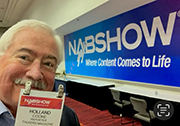 If you’re looking to jump-start – or optimize – your video interview technique, this session alone was worth the trip to Las Vegas. Washington-based video content strategist/producer/interviewer
If you’re looking to jump-start – or optimize – your video interview technique, this session alone was worth the trip to Las Vegas. Washington-based video content strategist/producer/interviewer 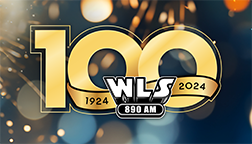 president and market manager Marv Nyren says, “WLS is bigger than a destination on your radio dial – it’s a Chicago institution and treasure. 100 years ago, radio was simply sound communication via radio waves but there’s nothing simple about the impact of WLS on Chicago. WLS has been a neighbor, a friend, and a mentor for people in Chicagoland. It’s been a place where people can go for entertainment and information – and it’s been a companion to the biggest moments in history. We are excited to usher in WLS-AM’s next 100 years with Chicago’s best audio content on-air, online, on-demand, and onsite.”
president and market manager Marv Nyren says, “WLS is bigger than a destination on your radio dial – it’s a Chicago institution and treasure. 100 years ago, radio was simply sound communication via radio waves but there’s nothing simple about the impact of WLS on Chicago. WLS has been a neighbor, a friend, and a mentor for people in Chicagoland. It’s been a place where people can go for entertainment and information – and it’s been a companion to the biggest moments in history. We are excited to usher in WLS-AM’s next 100 years with Chicago’s best audio content on-air, online, on-demand, and onsite.” It seems every hour Nielsen and Pierre Bouvard of Cumulus fame (formerly of Westwood One) put out a release stating that radio is just fine, thank you. Radio is more persuasive than TV, direct mail, streaming and print. Radio is a proven success for over 100 years. Most of the buildings housing Procter & Gamble were built on radio – not TV – advertising success. Happily, P&G realized radio’s clout and is now a dominant radio advertiser – again!
It seems every hour Nielsen and Pierre Bouvard of Cumulus fame (formerly of Westwood One) put out a release stating that radio is just fine, thank you. Radio is more persuasive than TV, direct mail, streaming and print. Radio is a proven success for over 100 years. Most of the buildings housing Procter & Gamble were built on radio – not TV – advertising success. Happily, P&G realized radio’s clout and is now a dominant radio advertiser – again!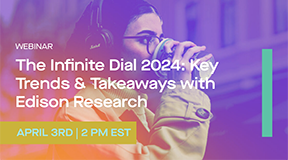 consumer behavior and technology adoption across smart platforms. Marketers and media buyers turn to these insights for important media trends in key channels such as radio, streaming audio, podcasts, social media, and more. Audacy will host a webinar on April 3 with head of research & insights Idil Cakim and Edison Research president Larry Rosin, who will share key trends from The Infinite Dial 2024, including: Media consumption and device adoption, in-car listening habits, podcast trends among key demographic groups, and observations and advertiser insights.
consumer behavior and technology adoption across smart platforms. Marketers and media buyers turn to these insights for important media trends in key channels such as radio, streaming audio, podcasts, social media, and more. Audacy will host a webinar on April 3 with head of research & insights Idil Cakim and Edison Research president Larry Rosin, who will share key trends from The Infinite Dial 2024, including: Media consumption and device adoption, in-car listening habits, podcast trends among key demographic groups, and observations and advertiser insights. 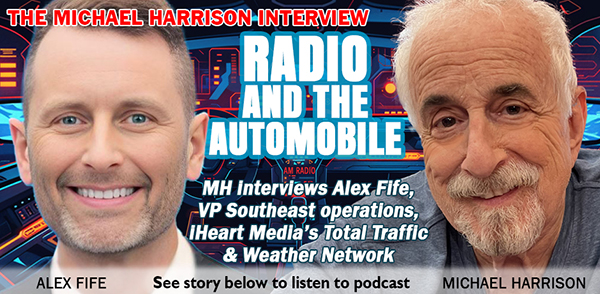
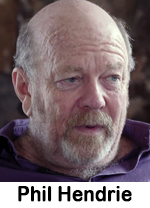 other platforms. Titled, Hendrie, and produced by Freestyle Digital Media and directed by Patrick Reynolds, the film features people like Hendrie’s one-time program director David Hall as well as comedians and Hollywood figures talking about the unique radio program Hendrie launched in 1990 in which he held kooky conversations with offbeat characters – all played by Hendrie himself – in real time. Hendrie tells KCAL-TV, “It was completely original… and it satirized something that I thought needed satirizing – talk radio.”
other platforms. Titled, Hendrie, and produced by Freestyle Digital Media and directed by Patrick Reynolds, the film features people like Hendrie’s one-time program director David Hall as well as comedians and Hollywood figures talking about the unique radio program Hendrie launched in 1990 in which he held kooky conversations with offbeat characters – all played by Hendrie himself – in real time. Hendrie tells KCAL-TV, “It was completely original… and it satirized something that I thought needed satirizing – talk radio.” 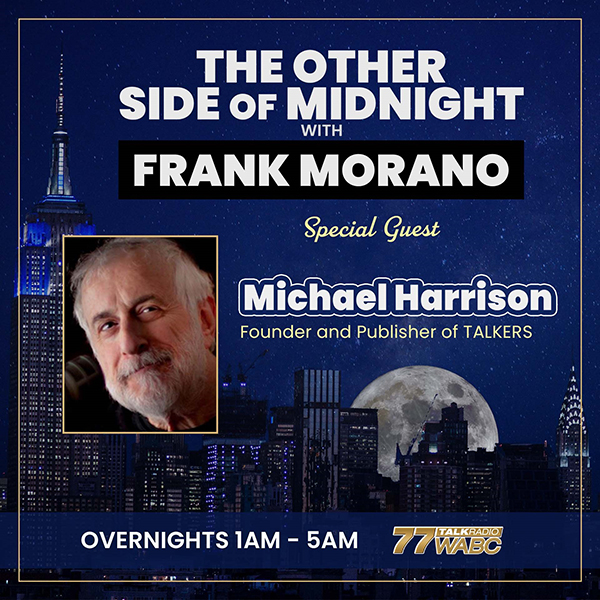
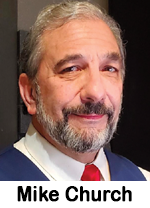 devotion to Internet radio broadcasting, we are launching ‘The Mike Church Show’ into terrestrial radio syndication! The launch date of ‘The Mike Church Show’ will be March 1 and the show will begin its repatriation of AM/FM radio in Atlanta, Georgia’s #7 U.S. radio market on WXKG “The King”! Church adds, “We’ve always known that terrestrial radio was going to play a part in our industry leading development of Internet radio, we just didn’t know in what way. Over the last two years, that role began to materialize with the dearth of quality talk shows and the opportunities to fill that gap left by the wrecking ball that was consolidation’s march through local radio properties.” The program airs live from 7:00 am to 10:00 am ET.
devotion to Internet radio broadcasting, we are launching ‘The Mike Church Show’ into terrestrial radio syndication! The launch date of ‘The Mike Church Show’ will be March 1 and the show will begin its repatriation of AM/FM radio in Atlanta, Georgia’s #7 U.S. radio market on WXKG “The King”! Church adds, “We’ve always known that terrestrial radio was going to play a part in our industry leading development of Internet radio, we just didn’t know in what way. Over the last two years, that role began to materialize with the dearth of quality talk shows and the opportunities to fill that gap left by the wrecking ball that was consolidation’s march through local radio properties.” The program airs live from 7:00 am to 10:00 am ET. 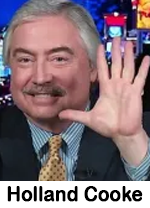 If you’re a news/talk station, don’t assume that you own “news radio” in your market. Imaging is important, but it merely talks-the-talk. You walk-the-walk with local news copy that delivers what solid commercial copy does: benefits. Just doing local news makes you special. But do listeners simply hear a station voice… reading something? Are you merely… accurate? Or do you deliver “take-home pay,” unwrapping the story to tell the listener something useful?
If you’re a news/talk station, don’t assume that you own “news radio” in your market. Imaging is important, but it merely talks-the-talk. You walk-the-walk with local news copy that delivers what solid commercial copy does: benefits. Just doing local news makes you special. But do listeners simply hear a station voice… reading something? Are you merely… accurate? Or do you deliver “take-home pay,” unwrapping the story to tell the listener something useful?
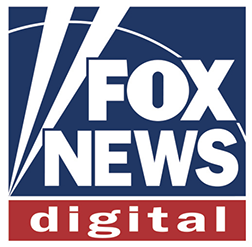 the month reaching 3.27 billion total multiplatform minutes, compared to CNN.com’s 1.85 billion, and NYTimes.com’s 1.59 billion. FOX News Media attracted 1.66 billion total multiplatform views, compared to NYTimes.com’s 1.49 billion, and CNN.com’s 1.17 billion. When it comes to total digital unique visitors – similar to radio’s cume – CNN.com still holds the lead with 112.7 million. But FOX News Digital (109.7 million) has gradually been gaining ground on CNN.
the month reaching 3.27 billion total multiplatform minutes, compared to CNN.com’s 1.85 billion, and NYTimes.com’s 1.59 billion. FOX News Media attracted 1.66 billion total multiplatform views, compared to NYTimes.com’s 1.49 billion, and CNN.com’s 1.17 billion. When it comes to total digital unique visitors – similar to radio’s cume – CNN.com still holds the lead with 112.7 million. But FOX News Digital (109.7 million) has gradually been gaining ground on CNN. 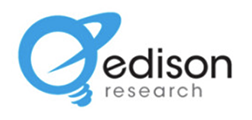 largest share of listening, accounting for more than one-third of daily time with audio among those age 13+. The vast majority of that listening (31%) is to AM/FM over-the-air signals.” (The other 5% comes from radio streams.) Behind AM/FM in listening is streaming music (20%), YouTube (14%), podcasts (11%), SiriusXM (8%), owned music (4%), TV music channels (3%), audiobooks (3%) and other (1%).
largest share of listening, accounting for more than one-third of daily time with audio among those age 13+. The vast majority of that listening (31%) is to AM/FM over-the-air signals.” (The other 5% comes from radio streams.) Behind AM/FM in listening is streaming music (20%), YouTube (14%), podcasts (11%), SiriusXM (8%), owned music (4%), TV music channels (3%), audiobooks (3%) and other (1%). 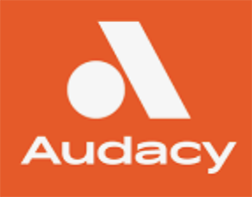 total Audio campaigns — including radio, streaming and podcast advertising— with Veritonic allows us to show the power of Audacy’s content in connecting with audiences and mobilizing customers. We’re thrilled to continue our partnership and enable our clients and advertising partners to leverage audio to achieve the utmost in competitive edge, reach, and ROI.”
total Audio campaigns — including radio, streaming and podcast advertising— with Veritonic allows us to show the power of Audacy’s content in connecting with audiences and mobilizing customers. We’re thrilled to continue our partnership and enable our clients and advertising partners to leverage audio to achieve the utmost in competitive edge, reach, and ROI.”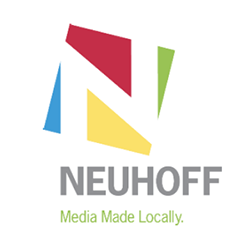 announced. Neuhoff states in announcing the sale that this “transaction is part of an overall strategic decision on behalf of the Neuhoff family to depart the broadcast industry after nearly 70 years,” according to Julian Hickman and Makena Neuhoff, trustees of the Neuhoff family. The company still owns 13 radio brands spread across the Springfield, Illinois; Bloomington, Illinois; and Lafayette, Indiana markets and it “expects to make additional announcements regarding future agreements as the Neuhoff divestiture process moves forward.” Hickman states, “We are proud of what broadcast ownership has meant to our family, our employees, and the markets we serve. Our grandfather, Roger Neuhoff, began his ownership in the business during the mid-1950s. He loved the broadcast industry and was proud of the way our radio and television stations served their local communities.” Neuhoff Media president Mike Hulvey adds, “We are pleased to see the iconic local media brands of Neuhoff Media’s Danville and Decatur markets all brought together through this historic transaction with the Champaign Multimedia Group. The next chapter for the Danville and Decatur radio stations and digital platforms will create something very special for each community.” Kalil & Co., Inc. acted as the exclusive broker for this transaction.
announced. Neuhoff states in announcing the sale that this “transaction is part of an overall strategic decision on behalf of the Neuhoff family to depart the broadcast industry after nearly 70 years,” according to Julian Hickman and Makena Neuhoff, trustees of the Neuhoff family. The company still owns 13 radio brands spread across the Springfield, Illinois; Bloomington, Illinois; and Lafayette, Indiana markets and it “expects to make additional announcements regarding future agreements as the Neuhoff divestiture process moves forward.” Hickman states, “We are proud of what broadcast ownership has meant to our family, our employees, and the markets we serve. Our grandfather, Roger Neuhoff, began his ownership in the business during the mid-1950s. He loved the broadcast industry and was proud of the way our radio and television stations served their local communities.” Neuhoff Media president Mike Hulvey adds, “We are pleased to see the iconic local media brands of Neuhoff Media’s Danville and Decatur markets all brought together through this historic transaction with the Champaign Multimedia Group. The next chapter for the Danville and Decatur radio stations and digital platforms will create something very special for each community.” Kalil & Co., Inc. acted as the exclusive broker for this transaction.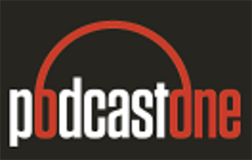 available, ‘The Adam Carolla Podcast’ has remained one of the most popular podcasts on the planet for well over a decade. Fans grew to love the pairing of Adam Carolla & Dr. Drew Pinsky that originated on the world famous KROQ radio and became a cultural touchstone and in 2012 they reunited the partnership for ‘The Adam and Dr. Drew Show.’ In each episode Adam and Dr. Drew take uncensored, nothing-off-limits, calls about sex, drugs, medical and relationship issues. Dr. Drew brings the medicine while Adam’s comedic rants are the spoonful of sugar to make it go down.” PodcastOne president and co-founder Kit Gray adds, “Adam Carolla’s contributions to the medium of digital audio entertainment are immeasurable. From his devoted audience of listeners and advertisers, Adam has inspired legions of loyal fans who tune in daily to hear his comedic take on a wide array of topics. His camaraderie with Dr. Drew is the stuff of legends. This is a podcasting duo that will go down in history as one of the greatest partnerships. As we have grown as a network, so have Adam and Drew and we are thrilled to keep the momentum growing.”
available, ‘The Adam Carolla Podcast’ has remained one of the most popular podcasts on the planet for well over a decade. Fans grew to love the pairing of Adam Carolla & Dr. Drew Pinsky that originated on the world famous KROQ radio and became a cultural touchstone and in 2012 they reunited the partnership for ‘The Adam and Dr. Drew Show.’ In each episode Adam and Dr. Drew take uncensored, nothing-off-limits, calls about sex, drugs, medical and relationship issues. Dr. Drew brings the medicine while Adam’s comedic rants are the spoonful of sugar to make it go down.” PodcastOne president and co-founder Kit Gray adds, “Adam Carolla’s contributions to the medium of digital audio entertainment are immeasurable. From his devoted audience of listeners and advertisers, Adam has inspired legions of loyal fans who tune in daily to hear his comedic take on a wide array of topics. His camaraderie with Dr. Drew is the stuff of legends. This is a podcasting duo that will go down in history as one of the greatest partnerships. As we have grown as a network, so have Adam and Drew and we are thrilled to keep the momentum growing.”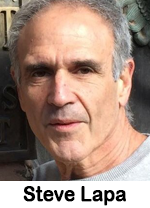 Let’s take a minute to welcome back an old reliable that has been part of our sales and marketing world since Adam pitched Eve and got the first “yes” on the original cold call. No telling how cold that call really was.
Let’s take a minute to welcome back an old reliable that has been part of our sales and marketing world since Adam pitched Eve and got the first “yes” on the original cold call. No telling how cold that call really was.